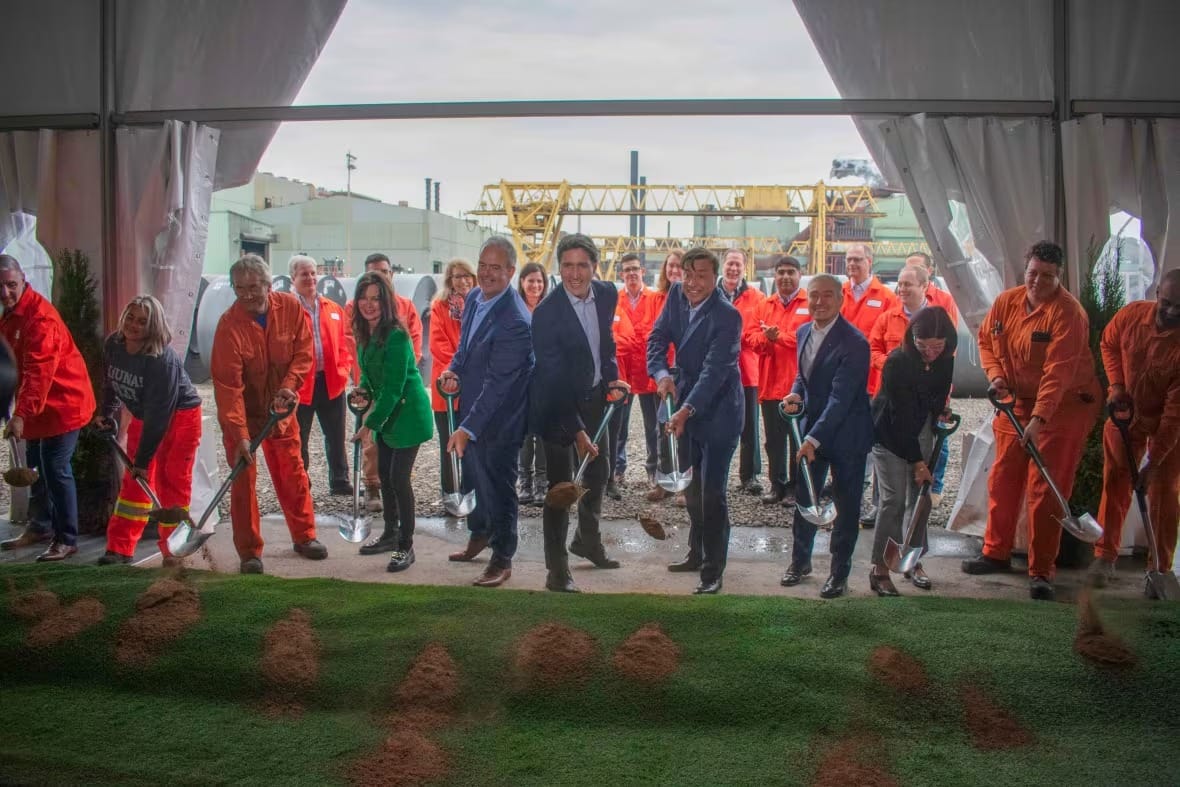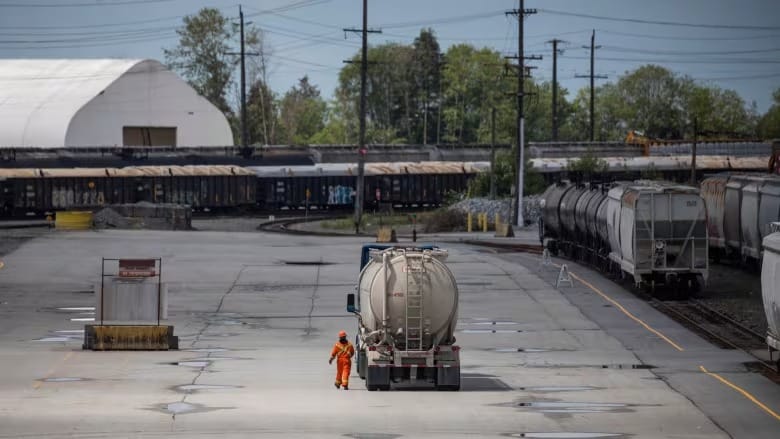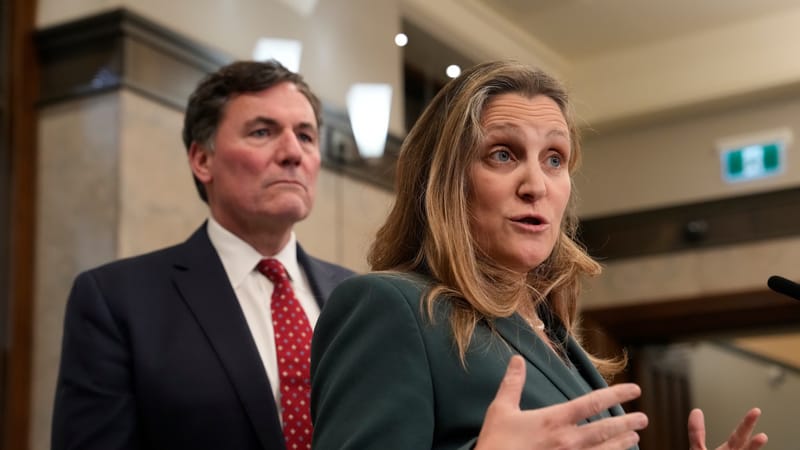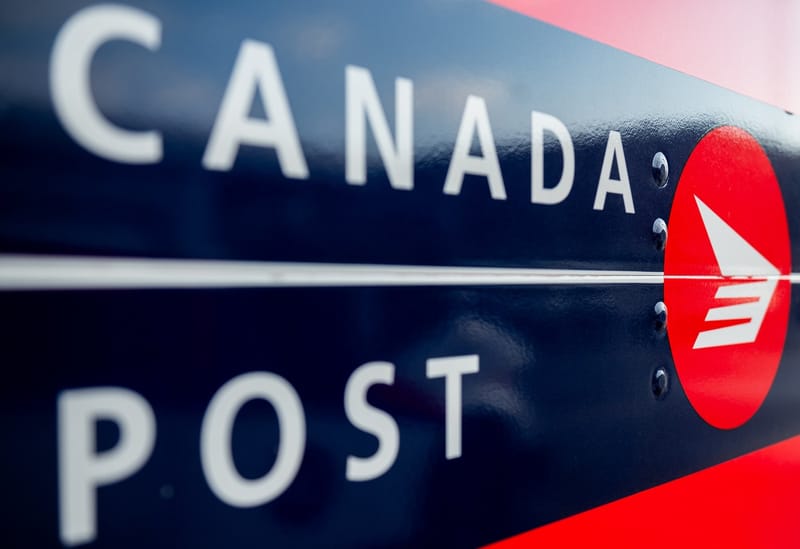ArcelorMittal Dofasco misses key milestones in $1.8B 'green' steel project promised for 2028
Hamilton steelmaker says decarbonization is still a go

Construction on ArcelorMittal Dofasco's significant "green" steel project has yet to commence, despite the company's plans to phase out coal at its Hamilton facility and reduce emissions by 60% by 2028.
An investigation by CBC Hamilton, including drone footage and interviews with industry sources, reveals that the project has not progressed as publicly promised, with key milestones for 2023 and 2024 missed. These milestones included the demolition of a coke plant to clear space for a direct reduced iron (DRI) plant, assembling what would become Hamilton's tallest structure, and securing approval for a 14-kilometre natural gas pipeline necessary for the project.
Dofasco stated to CBC last week that it remains committed to its decarbonization goals, with no changes to its greenhouse gas reduction targets, timelines, or budgets.
The federal government confirmed to CBC that Dofasco aims to achieve its carbon emission targets by 2030, two years beyond the original project deadline.
In 2022, ArcelorMittal and several politicians, including Premier Doug Ford and Prime Minister Justin Trudeau, celebrated the project. In addition to the DRI plant, Dofasco plans to add electric arc furnaces (EAFs). ArcelorMittal chair Lakshmi Mittal remarked at a press conference in October 2022 that the event marked a shift from planning to action.
Trudeau, who visited the plant that day, highlighted that "the first major steel company in the world making a switch toward electric, away from coal, is happening right here in Hamilton."
Dofasco, Ontario's largest industrial emitter of carbon dioxide, intends for its decarbonization project to reduce emissions by three mega tonnes, or 60%, contributing significantly to Ontario's goal of reducing emissions by 12 mega tonnes between 2022 and 2030. Trudeau noted that "green" steel will be increasingly valuable as North America's electric vehicle (EV) industry expands.
With combined funding of $900 million from the Ontario and federal governments, taxpayers and Dofasco are sharing the cost of the $1.8 billion decarbonization project. Liberal MP Filomena Tassi (Hamilton West—Ancaster—Dundas) called the government funding "one of the biggest and most important investments in Canada's fight against climate change."

Coke Plant Still Standing
In January 2023, Dofasco announced that construction was imminent. Rob Marzetti, the project manager at the time, described it as a highly complex task involving up to 900 construction workers. The initial steps included demolishing a decommissioned coke plant to make room for the DRI plant and assembling a 150-meter-tall tower for the DRI plant.
As of August, however, no visible progress has been made. Aerial images confirm that the No. 1 Coke Plant remains intact, as verified by a former Dofasco employee who requested anonymity due to concerns about professional repercussions. The former employee expressed disappointment, stating, "Nothing has changed at all except maybe a couple of rusty bolts."
Marzetti, who left the project by the end of 2023, attributed his departure to a misalignment between the project's timeline and his personal plans. He did not respond to CBC's request for comment.
When asked about the project, Innovation, Science and Economic Development Canada focused on the EAFs, without mentioning the DRI plant. Spokesperson Andréa Daigle stated, "ArcelorMittal Dofasco is working on the transition of their Hamilton facility from traditional blast furnace production to electric arc furnace production."
As of March 31, 2023, the federal government had provided less than $12.5 million to Dofasco for decarbonization, with the company required to repay the funds if it fails to meet the confidential agreement terms, according to Daigle.
Dofasco did not clarify its plans for the DRI plant.
Delayed Pipeline Construction
The construction of the pipeline necessary for delivering natural gas to Dofasco is also delayed. In February 2023, Hamilton city council was informed that the pipeline was crucial for powering the DRI plant until "green hydrogen" becomes more accessible and affordable. Enbridge was expected to apply to the Ontario Energy Board (OEB) by November 2023 for construction approval, with the pipeline planned to be operational by the end of 2025.

However, as of August 20, 2024, Enbridge has not submitted the application, indicating a delay of at least nine months. Enbridge spokesperson Steve Presant stated, "The timeline presented at city council has changed, which can occur when planning for a project of this size," but did not respond to further inquiries.
Project Still in Design Phase
Dofasco maintains that the project is progressing. The company described it as a "highly complex, large-scale project" that will shape its future. In a statement on August 28, Dofasco said it "will remain a thriving operation supporting the local community with jobs in Hamilton while contributing to a lower carbon economy and delivering the steels our customers require for a decarbonized world."
Dofasco did not address why construction seems not to have started. During a community meeting in July, Dofasco representatives indicated that the project is in the "pre-FEED" — or preliminary front-end engineering design — phase and is working with partners to refine designs and budgets.
Ontario's Ministry of the Environment, Conservation and Parks said its expectations for Dofasco's emissions reductions remain unchanged but did not provide a status update on the project or details on how much of the half-billion-dollar subsidy has been spent.
Caroline Ashley of SteelWatch noted a pattern in similar projects by ArcelorMittal in Europe, where ambitious decarbonization plans often stall at the design stage.
Motivation for Transitions
McMaster University Professor Giancarlo Dalle Ave explained that the DRI-EAF steelmaking process replaces the most carbon-intensive parts of steelmaking, using electricity for the final melting stage. While DRI steel production is currently less than 10% globally, EAF production accounts for about 20%. Increasing carbon taxes are driving companies to adopt these technologies, as traditional methods become less economical.
Canada's carbon tax is set to rise from $50 per tonne in 2022 to $170 per tonne by 2030. Conservative Leader Pierre Poilievre has pledged to eliminate the tax if elected next year.
Algoma Steel, Ontario's second-largest carbon emitter, is nearing the completion of its $700-million decarbonization project, which includes a $420-million federal investment. Algoma opted not to build a DRI plant but to use purchased DRI steel and scrap steel in its EAFs. CEO Michael Garcia reported that despite rising costs, the project is progressing and will position Algoma as a more competitive and sustainable steel producer.
Lynda Lukasik of Hamilton's Climate Change Initiatives Office remains hopeful that Dofasco's decarbonization project will still meet its 2028 target, emphasizing its importance for reducing carbon emissions and other pollutants.





